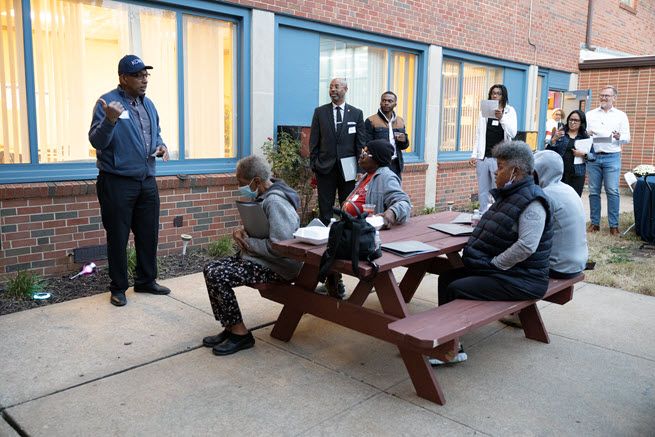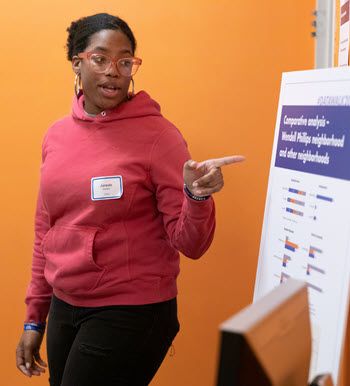In many neighborhoods, people who could subscribe to broadband don’t. They know that access to the internet is essential to survival, and that without it they lack access to health care, jobs, and government services. It is possible people don’t subscribe because it’s too expensive. Or it may be, given that Federal Communications Commission (FCC) maps are known to External Linkoverstate broadband coverage, they don’t have access to broadband at all. In 2022, we decided to check our assumptions and engage one unsubscribed neighborhood in meaningful conversation. These community conversations culminated with the September 6, 2023, release of External LinkCrossing the divide: What we learned from a disconnected neighborhood.
“Community research is often conducted ‘at’ community members,” Jeremy Hegle said. Hegle is assistant vice president and community affairs officer for the Kansas City Fed, whose work has focused on digital equity. “This often leaves participants with a bad taste in their mouths, with a feeling that those conducting the research are missing some key aspects of the issues at hand. We didn’t want that to happen with this project, so we formed a partnership with the community to design the research project. Together, we agreed on the right questions to ask, on how to ensure participants truly felt welcomed and empowered, and ways to leave residents more informed and better off as a result of participating in the research.”

John James, president of the Wendell Phillips Downtown East Neighborhood Association, welcomes participants to the broadband data walk at aSTEAM Village.
The project team included leaders of the External LinkWendell Phillips Downtown East Neighborhood Association, External LinkaSTEAM Village, and the External LinkKansas City Public Library, along with the Kansas City Fed’s External Linkcommunity development department. The team held a process called a data walk, where it shared data with neighborhood residents and got their feedback on what it meant to them. The data walk was a pilot project, one of four that the Federal Reserve System initiated in 2022 to increase the use of External Linkcommunity-engaged research methods, conducted with communities as partners. The External LinkUrban Institute provided technical support.
It is a pivotal time for digital equity. Over the next several years, states and U.S. territories will receive tens of billions of dollars to expand broadband access. This once-in-a-lifetime infusion provides an opportunity to connect millions to high-speed, affordable broadband. Additional funding will help ensure that broadband is affordable, and that people have the skills and devices needed to utilize it.
This research project identified three main themes:
- Historical and continuing disinvestment: Being an historically redlined and disinvested neighborhood comes with ongoing challenges.
- Trust: Few residents trust internet service providers (ISPs) to serve their best interests.
- Community empowerment: Residents want to better understand technology.

Jarede Swinton, a high school student involved in aSTEAM Village activities, facilitates a small-group conversation about broadband.
Our findings will support state broadband and digital equity offices as they craft their plans to reach disconnected communities in their own states. It will also be useful to communities seeking to ensure their populations have affordable, reliable broadband, along with the skills, confidence and devices to utilize it. The findings from this project also will help inform policymakers so broadband infrastructure and digital skills training funds can be spent on the most effective interventions.
“What we learned from this project, and what we heard loud and clear from our community partners, was that community members need to be involved in designing the solution—whether the solution is conducting a research project or figuring out what it’s going to take to get everyone across the digital divide,” Hegle said.
